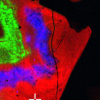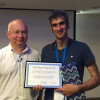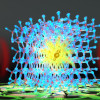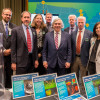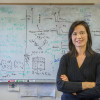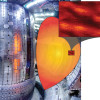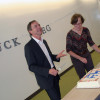News
Berkeley Lab’s OpenMSI Licensed to ImaBiotech
Two years ago, Berkeley Lab researchers developed OpenMSI—the most advanced computational tool for analyzing and visualizing mass spectrometry imaging (MSI) data. Now, OpenMSI has been licensed to support ImaBiotech’s Multimaging™ technology in the field of pharmaceutical and cosmetic research and development. Read More »
NERSC Burst Buffer Early User Program Wins ‘Best Paper’ at CUG2016
A new paper outlining NERSC’s Burst Buffer Early User Program and the center’s pioneering efforts to test drive the technology using real science applications on Cori Phase 1 has won the Best Paper award at this year’s Cray User Group (CUG) meeting. Read More »
Berkeley Lab Computing Sciences Inspires at National Science Bowl
Three members of the Berkeley Lab Computing Sciences staff talked to thousands of high school and middle school students at the National Science Bowl last week. They spoke about the wide-range of research being conducted at two of DOE’s most productive user facilities. Read More »
Could Aluminum Nitride Produce Quantum Bits?
The leading method for creating quantum bits, or qubits, currently involves exploiting the structural defects in diamonds. But using NERSC resources, University of Chicago researchers found that the same defect could be engineered in cheaper aluminum nitride. If confirmed by experiments, this could significantly reduce the cost of manufacturing quantum technologies. Read More »
Berkeley Lab Staff Make Key Contributions to National Lab Science Day on Capitol Hill
Forty staff members from across the DOE national lab complex helped convey the labs’ contributions and achievements to Congressional members and staff April 20 during National Lab Science Day. Read More »
CRD’s Xiaoye "Sherry" Li Named 2016 SIAM Fellow
CRD's Xiaoye “Sherry” Li has been named a 2016 fellow of the Society for Industrial and Applied Mathematics. Li is being recognized for advances in the development of fast and scalable sparse matrix algorithms and fostering their use in large-scale scientific and engineering applications. Read More »
Could Material Defects Actually Improve Solar Cells?
Scientists at the National Renewable Energy Laboratory are using supercomputers to study what may seem paradoxical: certain defects in silicon solar cells may actually improve their performance. Read More »
Multi-Scale Simulations Solve a Plasma Turbulence Mystery
Cutting-edge simulations run at NERSC over a two-year period are helping physicists better understand what influences the behavior of the plasma turbulence that is driven by the intense heating necessary to create fusion energy. Read More »
ESnet Bids Farewell to Greg Bell
Berkeley Lab Computing Sciences staff held a farewell party for Energy Sciences Network (ESnet) Director Greg Bell. At the end of this month, Bell will be leaving ESnet and Berkeley Lab to be the full-time CEO of Broala, a company that deploys the Bro network monitoring software first developed at the lab. Read More »







 Instagram
Instagram YouTube
YouTube